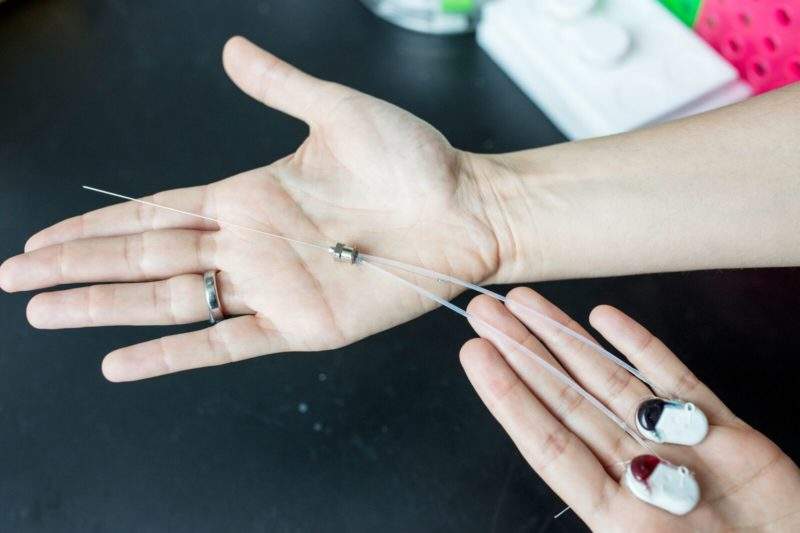
Researchers at Massachusetts Institute of Technology (MIT) have developed a miniaturised system that can deliver tiny quantities of medicine to brain regions as small as one cubic millimetre.
This type of targeted dosing could make it possible to treat diseases that affect very specific brain circuits, without interfering with the normal function of the rest of the brain.
Researchers can use the device—which consists of several tubes within a needle as thin as a human hair—to deliver one or more drugs deep within the brain, with very precise control over how much drug is given and where it goes.
“We can infuse very small amounts of multiple drugs compared to what we can do intravenously or orally, and also manipulate behavioural changes through drug infusion,” said Canan Dagdeviren, the LG Electronics Career Development Assistant Professor of Media Arts and Sciences and the lead author of the paper.
As with most therapeutics, drugs used to treat brain disorders can carry harmful side effects. They often react, sometimes adversely, with neurotransmitters or the cell receptors that interact with them.
“One of the problems with central nervous system drugs is that they’re not specific, and if you’re taking them orally they go everywhere,” says Michael Cima, the David H. Koch Professor of Engineering in the Department of Materials Science and Engineering and a member of MIT’s Koch Institute for Integrative Cancer Research, and senior author of the paper.
How well do you really know your competitors?
Access the most comprehensive Company Profiles on the market, powered by GlobalData. Save hours of research. Gain competitive edge.

Thank you!
Your download email will arrive shortly
Not ready to buy yet? Download a free sample
We are confident about the unique quality of our Company Profiles. However, we want you to make the most beneficial decision for your business, so we offer a free sample that you can download by submitting the below form
By GlobalData“The only way we can limit the exposure is to just deliver to a cubic millimetre of the brain, and in order to do that, you have to have extremely small cannulas.”
The miniaturised cannula—a thin tube used to deliver medicine—was created by the MIT team using microfabrication techniques. They constructed tubes with diameters of about 30 micrometres and lengths up to 10 centimetres that are contained within a stainless steel needle with a diameter of about 150 microns.
“Since the device can be customisable, in the future we can have different channels for different chemicals, or for light, to target tumours or neurological disorders such as Parkinson’s disease or Alzheimer’s,” said Dagdeviren.
The device could also aid the delivery of potential new treatments for behavioural neurological disorders, such as addiction or obsessive compulsive disorder, which may be caused by specific disruptions in how different parts of the brain communicate with each other.
Researchers said it is also possible to adapt the device so it can be used to measure chemical or mechanical changes that occur in the brain following drug treatment, by incorporating an electrode into the tip of the cannula to monitor any changes in neurons’ electrical activity.
“We believe this tiny microfabricated device could have tremendous impact in understanding brain diseases, as well as providing new ways of delivering biopharmaceuticals and performing biosensing in the brain,” said Robert Langer, the David H. Koch Institute Professor at MIT and one of the paper’s senior authors.







